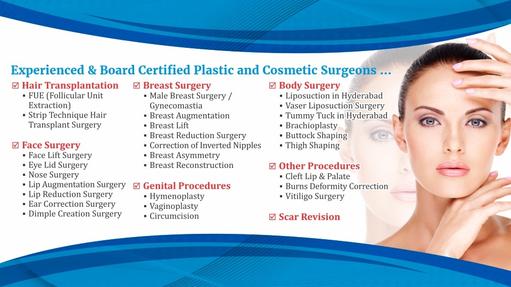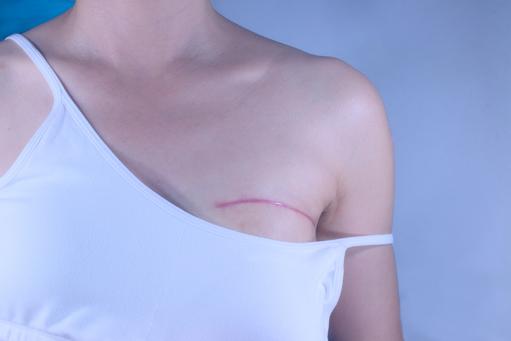Directory

Navid Jallali
Consultant Cosmetic & Reconstructive Surgeon
Mr. Navid Jallali is a Consultant Cosmetic & Reconstructive Surgeon, previously the head of Plastic Surgery at Imperial College NHS Trust. He is a leading UK plastic surgeon, serving as the President of the RSM Plastic Surgery section and Chairman of the medical advisory committee at London Welbeck Hospital. His practice in Harley Street, Central London, specialises in breast augmentation, breast reduction, gynaecomastia, abdominoplasty, facelifts, and rhinoplasty. He has particular expertise in dual plane breast augmentation, revision rhinoplasty, and fat grafting.
view this profile
Directory:
Tags:
Akruti hospital in Hyderabad
Akruti Clinic for Cosmetic & Plastic Surgery in Hyderabad, this one of best hospital in Hyderabad. Akruti conveys its hearty thanks to all the patients for their positive reviews which made us be ranked as Number 1 Center for Cosmetic Surgery in Hyderabad by Times Health Survey. We thank once again for the trust and faith reposed in Akruti.
Akruti is established with the sole mission to deliver world-class, holistic, and affordable plastic & cosmetology care. Akruti is a one-stop destination for pertinent care with extreme compassion and advanced technology.
Over the years, we have developed a lot however the values we built remain the same to meet our patients’ expectations with great attention.
Leadership & Excellence
With a commitment to deliver the best-desired results in all the procedures we do through advanced medical technology, exemplary treatment, and compassionate conduct.
Care & Service
Just beyond our duty, we cultivate a culture where every one of us in the team is committed to express the utmost care for the patients and treat their caregivers in the right way.


Terry Mykatyn
Plastic SurgeonProviding a comfortable and patient-friendly environment, West County Plastic Surgeons is committed to upholding Washington University’s reputation for cutting-edge reconstructive as well as cosmetic surgery procedures including breast augmentation, liposuction, and tummy tuck. Upon your first visit you’ll quickly learn that you are the center of attention - your comfort, your safety, and achieving your desired results is our ultimate goal.
view this profile

Yannis Alexandrides
Facial Plastic Reconstructive SurgeonDirectory:
Expertise:
Dr Yannis Alexandrides is an American and British board certified plastic surgeon specialising in cosmetic surgery. His speciality is facial reconstructive surgery; and is also board certified by the European Board of Plastic, Aesthetic and Reconstructive Surgery; and the Greek Board of Plastic Surgery.
In 2001, Dr Yannis Alexandrides founded the clinic at 111 Harley St. in London and is the Medical Director of the practice.
Qualifications: MD FACS
GMC Number: 4592121
Languages: Greek / English / Spanish / French
Website: https://www.111harleystreet.com/
Telephone: 0344 692 1111
view this profile

Elena Prousskaia
Consultant Plastic SurgeonDirectory:
Expertise:
One of the very few female plastic and cosmetic surgeons in UK, Elena Prousskaia runs a modern cosmetic surgery practice in the South East of England and London. In addition to her exceptional credentials, Elena’s experience and friendly manner mean her skills are in huge demand.
view this profile

Daniel Glass
Consultant DermatologistDr. Daniel Glass is an expert dermatologist, specialising in the diagnosis and treatment of a variety of skin conditions including eczema, acne skin cancer, psoriasis and rashes.
view this profile

Lena Andersson
Consultant Plastic SurgeonDirectory:
Expertise:
Ms Lena Andersson M.D., Dr.med., founded the Anelca Clinic in 1998, and recruited further Specialists to the team, including Hand- and Maxillofacial Surgical Specialists.
Ms Andersson has been a Consultant Plastic Surgeon since 1993. She originally trained at the Karolinska Institute, Stockholm. She received her specialist training in Aesthetic- and Plastic Surgery in Sweden, Switzerland and the USA, before being appointed as Consultant Plastic Surgeon at St Bartholomew’s Hospital and the Royal London Hospital in 1995, when she also commenced her private practice in London.
view this profile

Raina Zarb Adami
Aesthetic SurgeonDirectory:
Expertise:
After qualifying as a doctor from the University of Malta in 2004 and completing her housemanship on the island, Dr. Raina Zarb Adami then moved to Sydney, where she gained post-graduate experience in general and plastic surgery. She became a member of the Royal College of Surgeons of Edinburgh in 2008.
Dr. Zarb Adami’s approach to non-invasive facial rejuvenation and sculpting is unrivalled. She brings passion for quality to a cosmetic practice where integrity, intelligence and striving for perfection flourish. Her artistic eye complements a thorough scientific and surgical expertise.
She is an advanced practitioner based in London with an integrated approach using Botox (Botulinum Toxin), dermal fillers for treatments like lip enhancement and non-surgical rhinoplasty, skin care, chemical peels and Dermaroller microneedling techniques for facial rejuvenation and enhancement.
Her background in plastic surgery allows Dr. Zarb Adami to provide mole removal, scar treatment and split earlobe repair, offering optimal cosmetic outcomes.
Dr. Zarb Adami continues to attend and present at numerous conferences and workshops in aesthetic medicine and plastic surgery, both nationally and internationally. She has been awarded The Professions Woman of the Future in The Woman of the Future Awards 2010 and the Rising Star Award at the Aesthetic Awards UK 2011-2012.
She has successfully trained many practitioners in cosmetic procedures, and is a certified lecturer on the subject through The Academy of Aesthetic Excellence based in London. Dr Zarb Adami has dedicated time to volunteering with an Australian plastic surgery team operating on victims of burn injuries in Nepal. She also regularly participates in various other international voluntary work projects.
She is currently undertaking a research project as a PhD with the charity organisation RAFT (Restoration of Appearance and Function Trust) to develop an artificial skin – the Smart Matrix – to treat patients suffering from burns and other chronic and complex wounds.
view this profile
Directory:
Tags:

|
In 2013 the Hollywood actress Angelina Jolie announced that she had both her breasts removed because she carried the BRCA1 gene.
Her bilateral prophylactic mastectomy highlights the fact that a woman whose mother or father carries a faulty BRCA1 gene has a 50% chance of also carrying it and a 60 to 80% higher risk of developing breast cancer. Angelina Jolie exemplifies what many women with a family history of breast cancer are doing: testing for the BRCA1 gene; if positive, electing for a bilateral prophylactic mastectomy and after surgery, reconstructing their breasts. Hollywood myths do women a disservice In a New York Times article, entitled My Medical Choice, Jolie informed women about BRCA gene mutations and the challenges of breast surgery. Her efforts are overshadowed by the notion that breast surgery is quick and easy. Hollywood images propagate the myth that reconstructive surgery quickly restores breast symmetry, improves body image, quality of life, self confidence and wellbeing. In reality, it's major surgery with significant risks that entails an extended series of operations and follow-up visits and can take three to nine months to recover from. |
|
|
|
|






